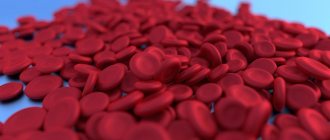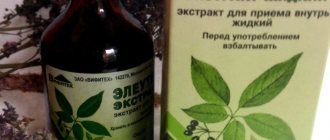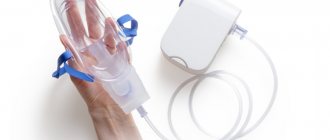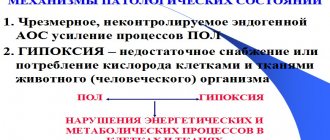- Ankle bandage
When using, you need to know how to properly bandage your leg with an elastic bandage:
- You need to tie an elastic bandage on your leg while lying down immediately after waking up;
- You need to bandage your leg from the ankle up, grabbing the heel;
- each subsequent turn of the bandage should overlap the previous one by 30–50%; for better fixation, the heel should be bandaged in a figure eight;
- The bandage should be applied evenly, gradually loosening it. The bandage should not be overtightened so as not to disrupt blood microcirculation;
- The bandage should be removed during sleep, unless there are additional instructions in this regard.
HEALTH AND JOY OF MOVEMENT
What could be more important than feeling good? Physical vigor, energy, and an optimistic attitude are the key to our success in business, career advancement, and simply a feeling of joy from every new day.
Spending the whole day in the office or busy at home, on vacation we strive to change our surroundings, move around, run, play sports, and work in the garden.
However, unusual movement activity almost always carries a risk of injury. An awkward turn of the foot leads to rupture of the ligaments, a sharp jerk leads to a dislocation of the joint. But now first aid has been provided, the stress is over. How to quickly return to normal life, relieve pain and swelling? TONUS ELAST advises: always have an effective, inexpensive and effective product on hand - elastic medical bandages.
COACH ADVICE
When performing health-improving exercises, be guided by the following rules: do not overestimate your physical capabilities, do not strive for maximum range of motion, do everything without tension. Never force the load, but increase it gradually, day by day, as your physical fitness improves. Especially if you are taking up physical exercise for the first time or have had a long break from exercise. Women who want to lose weight faster usually do weight training. If you feel pain in your joints during and after exercise, you need to pay more attention to warming up, reduce the weight of the weights and apply fixing elastic bandages to the areas of the knee and elbow joints, wrists, and ankles. This will not only relieve pain, but will also make you feel much more confident.
PHLEBEURYSM
What are varicose veins? Experts define it as an expansion of superficial veins, accompanied by impaired blood flow. The Latin word varix means knot. Swelling of the feet and ankle joints, a feeling of heaviness in the calf muscles, cramps, specific venous pain, itching of the skin of the legs - all these are symptoms of chronic venous insufficiency. According to statistics, more than a third of the European population suffers from chronic venous diseases. A major role in the development of varicose veins is played by hereditary predisposition, prolonged static loads, excess body weight, and the use of certain medications.
Compression stockings are divided into:
Therapeutic stockings
Experts recommend wearing it for the complex treatment of varicose veins, after traumatic or lymphatic swelling of the legs. It is worth noting that stockings from the Sigvaris brand come in two types: groin-length stockings and mid-thigh stockings.
Stockings for surgery
They are also called hospital stockings - they are produced in white color and with a hole for the foot. As the name suggests, they are used in preventive measures in hospitals and hospitals during operations to prevent blockage of blood vessels by air bubbles and blood clots (embolism). Also recommended after surgery.
Elastic bandages stand out:
Elastic bandage
This is a woven material that has the property of stretching. It is made of latex, as well as polyester fiber or cotton. Recommended for fixing joints, applying bandages, and also for quickly creating distributive pressure on the affected limb.
DOCTOR'S ADVICE
At the first signs of varicose veins, begin to act immediately:
- avoid excessive physical activity, do not lift weights;
- do not stand motionless for a long time; - lose excess weight; - wear low-heeled shoes (no higher than 4 cm);
- take the stairs more often;
- avoid overheating: long sunbathing or hot baths;
- do a contrast shower for your feet;
- while resting, place your legs on a raised platform so that your feet are 15 cm above the level of your heart;
— vigorous walking (but not running), swimming, cycling are good.
Vein disease affects women twice as often because their veins are naturally thinner and their connective tissues are weaker. An additional provoking factor may be pregnancy.
PREGNANCY AND VARICOSE
A pregnant woman is at significantly greater risk of developing varicose veins. The reason is hormonal changes in the body and increased body weight, which puts additional stress on the veins.
What can be done for veins during pregnancy? Even if none of the family members have venous diseases, do not forget to do gymnastics to train the veins and breathing exercises for better blood supply. And the use of elastic bandages will help relieve swelling of the legs.
Pros and cons of using
Like any therapeutic agent, elastic bandages have advantages and disadvantages.
Advantages:
- Ease of use;
- reusable;
- versatility - can be applied to any part of the body;
- reliable fixation.
Flaws:
- a feeling of itching and peeling of the skin under the bandage;
- the need for qualified assistance in applying a bandage to elderly patients or patients with limited mobility;
- feeling of discomfort in the warm season;
- difficulties in choosing clothes and shoes.
THE NATURE OF VARICOSIS
Our blood vessels function continuously, like a busy two-way highway, pumping 4,500 liters of blood through the heart per day. Through the arteries, blood is directed from the heart to the lungs (the natural force of gravity helps it in this), enriched with fresh oxygen, washes the internal organs, and then, already spent, returns back through the veins. The way up is more difficult, and here the calf muscles help perform the pump functions: contracting with every movement, they force the veins to contract and the blood flows upward. To prevent the flow of blood from being disrupted, nature created special shutter valves on the inner walls of the veins that open only in one direction.
If you stand or sit for a long time, blood accumulates in one place, the veins dilate, and the valves can no longer reliably block the reverse flow (Fig. 2). The veins lose their elasticity, become deformed and appear as unsightly nodes on the skin of the legs (Fig. 3).
How to wear and how much to wear
The stocking is first turned out and folded into a roll, and then rolled out along the leg from bottom to top. This will ensure proper pressure distribution and prevent deformation of the product. There are also special devices that make putting it on easier. They can also be purchased at orthopedic stores.
It is advisable to wear compression hosiery in the morning while still in bed: it is at this time that the swelling of the legs is usually minimal, so that optimal compression of the veins can be achieved. It is also recommended that before putting on tights, hold your legs elevated for a few minutes and “work” your feet to further increase the outflow of venous blood and lymph.
Compression anti-varicose products are sometimes worn for a long time, removed only in the evening before going to bed. Such recommendations can be given, for example, for postphlebothrombotic syndrome (PFTS), thrombophlebitis, and persistent edematous syndrome. In other cases (with initial varicose veins), it is enough to wear such stockings (tights) only for periods of static or dynamic loads. The rules for wearing compression garments are determined by your doctor.
Author of the article: Letunovsky Evgeniy Anatolyevich Last update: 09/24/2020.
COSMETOLOGIST'S ADVICE
If you are at risk, follow these rules to maintain healthy veins:
- refuse bioepilation;
— do not use hard sponges and brushes;
- do not use body scrubs that contain crushed bones and nut shells
Varicose veins are not just a cosmetic problem. Waste from waste blood stagnates in the veins, irritating their walls, causing tissue inflammation. Varicose veins cannot be left untreated: blood clots and blood clots form in the inflamed areas of the veins. Having broken away from the venous wall, such a thrombus can travel through the bloodstream into the lungs, causing blockage of the pulmonary artery.
What is better to use in the postoperative period?
During the operation, thin walls of blood vessels are always damaged, and as a result of these damages, substances enter the blood that slow down blood flow and increase blood clotting. Patients are advised to use compression garments only to prevent the formation of blood clots and blood clots.
During the postoperative period, patients are always inactive and it is very difficult for them to care for themselves. Therefore, it will be much more effective to use stockings than a bandage.
COMPRESSION THERAPY FOR VARICOSE
Compression therapy has been considered for many years as an adjunct to drug therapy or surgery. Compression treatment has been used since ancient times, but only in recent decades has elastic compression begun to be considered as a separate and independent type of treatment - COMPRESSION THERAPY.
Compression is the main and most effective method of treatment for chronic venous insufficiency, when maintaining the elasticity of the veins is especially important. For this purpose, we suggest you use high-quality medical elastic bandages.
A properly applied bandage eliminates the possibility of backflow of blood and eliminates venous stagnation. Very often, patients who can help themselves only by using an elastic bandage refuse it simply because they do not know how to apply the bandage correctly or how to secure it.
Classification of compression hosiery
Modern compression products are available in the form of tights, stockings of various heights and knee socks. But they are divided not only by appearance. They are also divided into classes according to the degree of compression they provide. It is measured in millimeters of mercury.
An example of a compression stocking from a famous Asian manufacturer
The classification of compression products used in our country is based on the German standard RAL-GZ 387 adopted in Europe. It is the most strict and regulates the nature of pressure distribution and its compliance with the physiological patterns of venous outflow, the quality and composition of the materials used.
Compression garments are divided into 4 classes:
- Easy. Compression 18–21 mm Hg.
- Average (moderate). Compression 23–32 mm Hg.
- Strong. Compression 34–46 mm Hg.
- Very strong. Compression 49 mm Hg.
The term “tightness” is sometimes used to describe compression tights and stockings. In fact, it is an incorrect replacement for the concept of “compression”. This pseudo-medical formulation is based on the fact that with an increase in the level of pressure applied, the underwear actually becomes less stretchable and denser to the touch. But using this term, and even more so trying to look for a correspondence between the compression class and the density of ordinary tights (measured in DEN) is illiterate and fundamentally wrong.
DOCTOR'S ADVICE
Along with the treatment that the doctor will prescribe for you, the body must receive a sufficient amount of substances that help strengthen blood vessels and prevent the formation of blood clots.
For diseased veins, it is necessary to follow a diet with a minimum of salt and spices, eat food rich in vitamins and fiber, and drink freshly squeezed juices. Try to avoid anything fatty, overcooked, or smoked.
Avoid products with a large number of synthetic additives, as well as those made from refined white flour and polished rice.
Pay attention to two vitamins that are especially important for you: P (rutin) and R (thiamine hydrochloride).
Monitor your total caloric intake and try not to gain excess weight.
The effect of bandaging is obvious - the diameter of the veins decreases, swelling subsides, pain in the leg and a feeling of heaviness disappear. Compression not only promotes the healing of trophic ulcers, but is also an effective prevention: the pressure of the bandage in combination with movement increases the speed of blood flow by approximately two times, reviving metabolic processes. Bandaging is useful for any form of venous insufficiency.
How to choose a compression product?
Compression garments cannot be chosen independently; they are prescribed exclusively by a phlebologist based on an examination and an ultrasound scan of the veins of the lower extremities.
Making the right choice
When choosing compression, the following are taken into account:
- the nature and speed of venous blood flow;
- severity of pathological vertical and horizontal reflux;
- the presence of an obstruction to the outflow of blood, which is most often caused by thrombosis.
Many patients have a completely logical question: why go to the doctor if the package of underwear contains a description of compression classes and indications for them? Isn’t it possible to get by with the help of a consultant in an orthopedic salon?
No, self-analysis of symptoms is not enough for the correct selection of compression garments: the doctor is guided not only by the degree of venous insufficiency and clinical symptoms. Other factors are also important. And the determining parameters often become age and the presence of concomitant somatic pathology: sometimes the use of a high class of compression is fraught with a deterioration in the general condition, despite the correction of venous insufficiency.
Observe compression level and wearing mode
Risks of wearing compression class 3 in old age:
- Risk of stroke, heart attack.
- Severe cardiovascular insufficiency
Determining treatment tactics and selecting the class and type of compression hosiery is the prerogative of the doctor. But the consultant of an orthopedic salon can handle the selection of the size and height of the product. He will also give detailed care instructions and teach you how to put on compression tights and stockings correctly.
Preference should be given to brands whose manufacturers are guided by the RAL-GZ 387 standard. This will be indicated by the corresponding icon on the packaging. The standard is a guarantee of high quality, physiology and predictability.
High-quality therapeutic anti-varicose jersey is not sold in pharmacies. The products are presented in orthopedic salons.
Don’t save money – don’t buy counterfeits and products from unknown manufacturers. The compression will almost certainly differ from the declared one, and the durability of the product will be low.
TRAINER'S TIPS
Athletes know: no training session begins without a preliminary warm-up. Why do you need a warm-up? A set of simple exercises will warm up the muscles of the body, making the circulatory system and musculoskeletal system ready for stress. The risk of injury will be significantly reduced. The physiological effect of warming up is explained by the fact that human organs and systems have a certain inertia and are not able to immediately engage in action. Warming up should be performed in low-intensity mode for 5-15 minutes.
Tennis players who tirelessly hit the ball with their rackets suffer from professional pain in the elbow joint. Runners and football players suffer from meniscus prolapse. The painter's fingers, being in one position for hours, sometimes refuse to hold the brush. A graphic artist, who clicks a computer mouse day after day, is surprised to notice that his hand begins to cramp. The legs of an office worker, crossed all day under the table, and the legs of a salesperson standing behind the counter get tired. All those who have experienced increased physical activity for a long time - ballet dancers, surgeons - are also susceptible to the disease.
If your profession is in a “risk zone” and involves long periods of standing (teachers, salespeople, hairdressers, waiters), working in a monotonous position (ticketeers, accountants, cashiers) or heavy load on the hands (turners, loaders), You have the power to prevent occupational diseases or mitigate and alleviate their manifestations. Daily wearing of elastic medical bandages or TONUS ELAST bandages will relieve pain, warm tired muscles, and you will feel the relief you have long dreamed of.
DOCTOR'S ADVICE
The most important rule is to constantly move your wrist to avoid hardening, which can take months to get rid of. To restore and strengthen your wrist, stretch the surrounding muscles by bending your fingers towards your elbow and holding them in this position for 30 seconds. When you feel pain, stop. If everything is fine, try rolling a 5-centimeter lump of plasticine in your fingers for 30 seconds. Over the course of a week, increase to a few minutes. When rehabilitating when lifting weights, start with lighter weights and perform more repetitions. In case of pain, inflammation or swelling, it is necessary to cover the injured area with ice wrapped in a towel. If the pain continues, consult a doctor.
BANDAGE SCHEME FOR VARICOSE DISEASE
1. Select a bandage from the TONUS ELAST range of the length, width and degree of extensibility you need. 2. Before bandaging, lie down with your legs elevated for 5-10 minutes; Leave the bandaged leg elevated. 3. The bandage is applied to the foot from the ankle to the base of the toes; then the lower leg and thigh are bandaged from bottom to top. 4. Each round of the bandage is applied with an overlap of the previous round by 50-70%. 5. The greatest tension of the bandage is in the ankle area, gradually reduce it towards the top of the leg. 6. It is necessary to bandage the heel and form a so-called “lock” with a coil of the bandage, which prevents the bandage from slipping when walking. 7. The last round of the bandage should be 5 - 10 cm above the affected venous area; the end of the bandage is secured with clips or a safety pin.
When the bandage is applied correctly, the fingertips turn slightly blue at rest, and after movement begins, the color returns to normal. After applying an elastic bandage, the patient is recommended to practice walking for 20-30 minutes.
Caring for elastic bandages
An elastic bandage for varicose veins is used repeatedly. Proper care extends the life of this medical device. The bandage should be washed only in lukewarm water. It is prohibited to use washing powders and soap when washing. It is better to initially prepare a soap solution from shampoo, liquid soap, detergent, foam it and use it for soaking.
After careful and careful washing without intensive action, the bandages should be rinsed in the same cool water. You can’t twist them, it’s better to fold them several times and squeeze them lightly without stretching the fibers. You can dry the bandage in a dryer, away from artificial heat sources and direct sunlight. It is not recommended to hang an elastic bandage. It is better to lay it out in a horizontal plane.
In order to use modern research methods to determine the presence of varicose veins of the lower extremities and, if indicated, to select an elastic bandage that creates the necessary compression, call the Yusupov Hospital phone number and make an appointment with a phlebologist. The doctor will prescribe the necessary treatment. The nurse will teach you how to bandage your leg with an elastic bandage for varicose veins.
SCHEME OF BANDAGING THE AREA OF THE WRIST JOINT
1. Wrap a full circle, starting from the inside of the wrist. 2. Make a diagonal turn down through the outside of the hand between the thumb and forefinger, and through the palm back to the wrist. 3. Wrap the bandage around the wrist and down through the palm, then around the outside of the hand between the thumb and index finger, and back to the palm. Wrap your wrist. We also make a second full turn in a figure eight. 4. Wrap the wrist and begin to make circular turns up the arm, partially covering (half) of the previous layer. Secure the bandage over your wrist.
SCHEME FOR BANDAGED HANDS DURING BOXING
It is best to bandage your hands yourself so that you can feel how tightly your hand is tightened. The hand should be bandaged so that the bandage does not pinch when the hand is straightened, but tightens well when it is clenched into a fist. There are many different ways to wrap your hands. Each boxer chooses the most convenient one for himself, although he may change it more than once during training. As an example, one of the ways to bandage hands is given: 1. You should put a “loop” on the thumb and start wrapping a full circle around the lower part of the palm, then move on to the wrist. 2. Turn diagonally, then upward through the outside of the hand between the thumb and forefinger. 3. Then you need to make two full turns at the base of the fingers. 4. Wrap the bandage around your wrist down to the base of your thumb. 5. Turn the bandage around your thumb. 6. Continue wrapping across the outside of the palm to the base of the thumb. 7. Wrap a full tour of the bandage along the inside of the palm between the thumb and forefinger diagonally. 8. Turn the bandage around your thumb. 9. Make a turn from the base of the thumb along the bottom of the palm. 10. Turn diagonally, then up through the outside of the hand between the thumb and forefinger. 11. Then you need to make two full turns at the base of the fingers. 12. Secure the bandage. When securing a bandage with adhesive tape, it should not be wrapped around your fingers, which should be protected only by the bandage. Do not wet the bandages.
Why? Let's look at the model - stockings for surgery:
- This model of stockings is produced in white color - this allows specialists to monitor the patient’s veins during the operation itself, white color also makes it possible to monitor the healing process of a postoperative wound or suture, and a specially provided hole for the foot allows the nurse to monitor the patient’s body temperature;
- It is much easier and more convenient for the operating nurse to put on stockings without disturbing the patient.
The main advantage of using hospital stockings during surgery is that they are easier to put on and do not slip down after the patient returns to the room. For childbirth, as well as for surgery, stockings are preferable to bandages for the same reasons.











